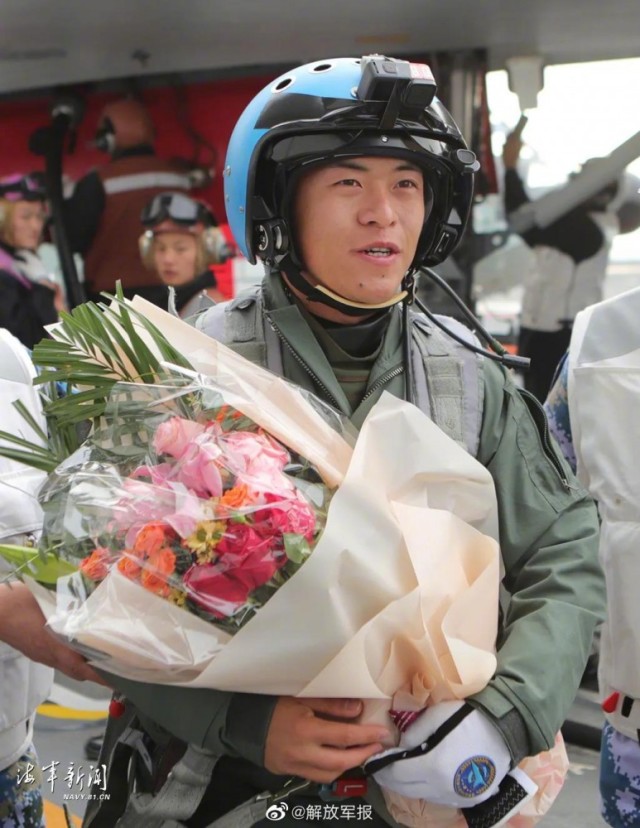Original taken from naval_manual's colleague Second Chinese carrier-based air group

Hand on the pulse.
It would be necessary to walk one of the userpics, fortunately, the reason appeared. The other day, the second deck air group was "certified" in China. The message about this went almost unnoticed-against the background of all this in the news. Meanwhile, the event is, of course, important. The main thing is in a short but capacious video:
Since not everyone reads English, I will tell you: the other day (probably in early November), the pilots of the second Chinese air group passed the test in Bohaiwan - we, lovers of Russian-Japanese history, this piece of the Yellow sea is better known as the Pechili Bay. The following is fundamentally important: the pilots of the new air group were trained to fly from the deck from young cadet positions, according to the new program. The first avigroup was recruited from already established air force pilots (they write about the air force, although it is possible that we are talking about naval aviation pilots of the PLA Navy) who were undergoing a retraining program. The new pilots are younger - they are under thirty - and it is claimed that the new program has reduced training time, increasing its effectiveness (whatever that vague word may be).
It is clear that the Chinese are proud, and there is something. However, in such cases, an experienced observer should add tar, showing care and intelligence. To begin with, I note that the Chinese began to cover up the side numbers of aircraft - which, however, turns out every other time. The planes of the first air group had numbers within 100 ... 125, the planes of the second lost one at the beginning of the number. The very fact of censorship is interesting, although it is not very clear what the Chinese want to hide. Perhaps it is just the fact-not explicitly stated - that this is the second (and not, say, the third) air group. Meanwhile, this can be said relatively confidently, planes with "tenth" numbers first appeared in the frame relatively recently, there were no other series of numbers yet.
Secondly, it is interesting that the new pilots passed the test on the "Liaoning", and not on the "Shandong", which was solemnly commissioned last December. This is even more interesting because in September there were reports of the first ever Chinese Navy exercises involving a pair of aircraft carriers . It turns out that the Chinese had only one full-fledged air group during these exercises. The fact that the second air group was "handed over" to the fleet almost a year later than the second aircraft carrier, in itself may not be evidence of "some problems" - but, combined with the September reports, causes a certain skepticism.
However, it could not be otherwise. Comparing an aircraft carrier story with buying a donkey may seem hackneyed, but you can't go against the facts - it's easier to buy a donkey. And, I dare say, the Chinese are still waiting for new fundamental problems. In one of the English-language messages about the joyous event, interesting details are given: over-trained pilots of basic aviation retain some muscle skills that are inappropriate on the deck, in particular, they are used to dropping the gas when landing, while the deck pilot can not do this. Particular, emphasizing the commonality: learning is always better than to be retrained. The fundamental problem arises because the third and fourth Chinese aircraft carriers, as they say, will differ from the Liaoning and Shandong in the presence of catapults. This means that the Chinese will again have to change the pilot training program.
Moreover, Chinese carrier-based aircraft may fall into the "Soryu"and "Hiryu" trap." At one time, the Japanese, who received two new small aircraft carriers, were largely forced to come to the concept of "two ships - one air group". The decks of the Hiryu and Soryu did not allow all the attack aircraft in the hangars to be placed in readiness for launch. Since the hangars themselves were closed - and it was impossible to warm up the engines in them - it was also impossible to ensure the timely lifting of the entire air group in two "spottings". The only solution was to "join forces" - one aircraft carrier lifted a torpedo squadron into the air, the other - a bomber squadron, which made it possible to create a full-fledged strike group relatively quickly. This, on the one hand, had a positive impact on the development of the Japanese carrier doctrine, as it contributed to the development of methods of massing carrier-based aircraft. On the other hand, there were also problems - the flexibility of using deck aircraft decreased, and the failure of one ship or its air group violated the integrity of the division (see Shokaku, Zuikaku, and midway).
Thus, the technical features of the ships left an imprint on the doctrine of the use of carrier-based aircraft, and this doctrine did not change despite the fact that for new (and old) ships the same technical restrictions were no longer in place. Something similar can happen to the Chinese carrier-based aircraft: by the time the first ship with catapults enters service, the Chinese Navy will have accumulated a large and specific experience in using ships with jumps, which will be fixed in the minds of officers who have grown up to command positions - and fixed in the governing documents. This can lead to" underutilization " of the catapult's potential.
However, all this does not exclude the main thing: the Chinese are demonstrating again. And these demonstrations are still very interesting to follow.
P.S. for connoisseurs - a little more complete video in Chinese. This video features a night landing - a very rare shot from the Chinese deck. But there is no certainty that it is removed now.
